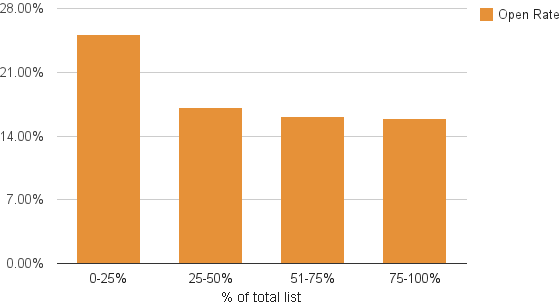
Trends
Email segmentation, broadly defined, is when you don’t send an email to everyone on your list. You apply data and insights to group potential recipients by common traits, behaviors, or demographics. By matching messaging to that group you increase the relevancy of the email. But does it work? Does the effort of segmentation yield any sort of reward? Here’s what we found.
The Goods
We looked at nearly 8,000 email campaigns sent by 20 different resorts over the last 4 years to a total of more than 180,000,000 recipients. We then looked at the campaign size versus the total list size. So if a campaign was delivered to 50,000 people and the total size of that resort’s list was 100,000 people, the “% of total list” would have been 50%.
To avoid including resorts that never send to more than a small portion of their database, we only included brands that had sent multiple campaigns in each of the “% of total list” groups. Here’s how the open rates shook out:

Simply put, yes, sending to smaller, more focused groups does indeed lead to an increased open rate. This effect is magnified especially for campaigns sent to fewer than 25% of the list. What about clicks and opt-outs? Those held pretty constant for each group.
What This Means
Simply put, segmentation works. When you forego sending to everyone so you can tailor a specific message to a specific group, that group is more likely to find that message valuable enough to open and see what you have to say.
It’s another piece of evidence in the marketing realm of relevancy. When you get the right message, in front of the right person, at the right time, the words you say have a better chance of matching their needs and wants in that moment.
Count it Down
In just a week’s time we’ll release another resort marketing insight just like this one. Don’t want to miss out? Stick your email below and we’ll alert you when it’s published.